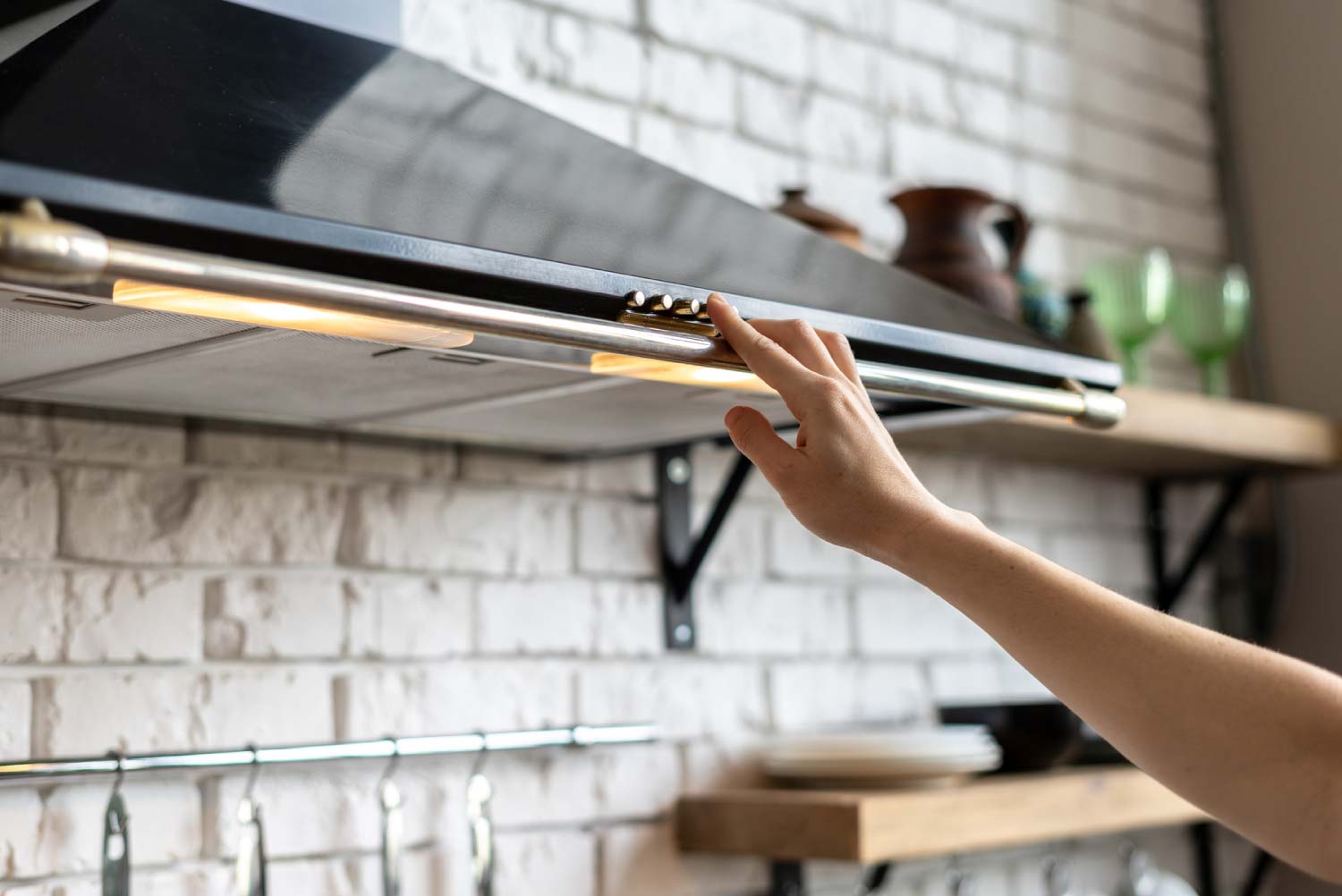
Apartment cleaning costs vary considerably depending on the cleaning frequency, the apartment's size, and its inhabitants' cleanliness.
Refresh your refrigerator’s dispenser for endless clean drinks


Your fridge's water dispenser makes it easy to get a cool glass of water. However, lately, you've noticed a funky taste whenever you take a sip. The strange taste is due to the buildup of minerals, like calcium and magnesium, in the dispenser's tube. Use this guide to learn how to clean the fridge water dispenser and start enjoying fresh, clean water again.
To prevent a mess, turn off your fridge’s water supply before you start cleaning the dispenser. Locate the water shut-off valve to your fridge, which may be located under the kitchen sink or inside of the fridge. Turn the valve to the off position.
If you're not sure where the fridge's shut-off valve is, you can try turning off the main water supply in your home. Another option is to contact a local refrigerator repair company for assistance.
Next, find the water tank inside the fridge and locate the copper tubing that connects it to the dispenser's reservoir. Water travels through the tubing into the dispenser, leaving a trail of minerals in its wake.
Disconnect the tubing from the water tank, using a screwdriver to loosen the screw. Leave the other end of the tube connected to the reservoir. Place a funnel in the opening of the tube, then slowly pour the vinegar into the funnel, then down into the tube. Hold the tube up, so the vinegar flows down into the reservoir. Have someone help you hold the tubing and funnel to make things go more smoothly.
Let the vinegar sit in the reservoir for at least 10 minutes.
Push the button to dispense water to flush the vinegar out of the reservoir. Place a bowl or glass under the dispenser nozzle to collect the vinegar. Once the vinegar stops flowing out, the reservoir is empty.
Fill a small bowl with the vinegar and dip a clean, unused toothbrush or small, round bottle brush into it. Use the vinegar-soaked brush to scrub away buildup from the dispenser's nozzle. You may be able to see the mineral buildup around the nozzle, as it will look like a pinkish slime.
For a more hands-off approach to cleaning, soak a paper towel in the vinegar. Wrap the towel around the nozzle and let it sit overnight. The vinegar will eat away at the mineral buildup, so that the next morning, all you'll need to do is wipe it away.
Clean the tray that catches water, too. While the tray won't affect the taste of your water, it can get grimy, which may make getting a drink less appealing.
Remove the tray from the front of the refrigerator. You may be able to just pry it off. If you can remove it, wash the tray in the sink with warm, soapy water, using a dishrag or sponge to clean away grime. Rinse the tray with warm water and dry with a clean towel.
If you can't remove the tray, no worries. Simply clean it with a soapy dishrag or sponge, then rinse with a new, wet rag or sponge. Dry with a towel.
At the same time you're cleaning the tray, wipe down the exterior area around the water dispenser.

When everything is clean, reconnect the tubing to the fridge's water tank and turn the water supply back on. Let the reservoir refill, then use the dispenser to fill up a large mixing bowl or pitcher with water.
Pour out the water into the sink, then refill the bowl or pitcher. Dump the water out again. You need to flush the line to remove any trace of vinegar, so your water doesn't taste weird.
Dispense a small amount of water into a glass and smell it. If it smells like vinegar, fill another pitcher or bowl with water, then try the sniff test again. You may also take a small sip of the water to see if you detect a vinegary taste.
Unsure of whether your fridge water dispenser needs a refresh? Discover a few of the most common signs that it’s time to break out the cleaning supplies.
The most obvious sign that your fridge water dispenser needs some intervention is if its filter alarm warns you or its light changes color. In addition to swapping out your water filter, you’ll also want to give your dispenser nozzle some TLC. Keep in mind that some filter alerts lose their accuracy with age, so you may benefit from cleaning the fridge filter and dispenser on a routine schedule.
A funky taste or smell from your fridge water or ice is a telltale sign that your water dispenser is due for a cleaning. Water that tastes or smells metallic signifies that calcium and magnesium have accumulated, even if you can’t see the mineral buildup.
If you notice a change in your dispenser’s water pressure, the excess buildup could be blocking water flow. Scrubbing your dispenser can eliminate the blockage and create ideal water pressure for filling up your glass and staying hydrated.
Like most appliances, your refrigerator, and its water dispenser, work more effectively when properly maintained. Not only should you clean your water dispenser to ensure a well-functioning fridge, but also to ensure that your household members are drinking clean and safe water.
Water often contains minerals which create buildup that can reduce your appliance’s lifespan. Mineral buildup also creates an environment where harmful bacteria and mold can thrive. Appliances that process hard water experience buildup quicker than those that process soft water. If this accumulation of minerals goes unattended in your dispenser, it can impede your home’s water quality and fridge’s energy efficiency.
There are a few ways to reduce how quickly minerals build up in your refrigerator’s water dispenser. Heed the tips below to maximize your dispenser’s water quality and efficacy.
Replacing your water filter about once every six months is one of the simplest ways to soften your water and filter out harsh minerals. It is one of the best ways to maintain your refrigerator and freezer to ensure they function properly. Filter upkeep also prompts cleaner, healthier water consumption in your home.
Another way to guarantee water free of minerals and deposits is using a water softening system or a phosphate filter. Water softener systems and phosphate filters process water, rid it of excess minerals and deposits that cause buildup, and return it to the source for less harsh water on appliances and offers a smoother taste.
Of course, an occasional overflow or water spill is bound to happen at your fridge water dispenser. Avoid spilling when possible to prevent expedited buildup in your water dispenser reservoir. Less water spills will also improve the overall cleanliness of the dispenser area and prevent your fridge from getting harsh water stains.
In most cases, tackling fridge water dispenser cleaning is a relatively simple DIY project. However, you may want to enlist a pro if low water pressure issues continue after cleaning your dispenser and changing your water filter. Hiring appliance repair pros can help you locate the source of your refrigerator’s problems in no time. The average cost of fridge repair ranges from $200 to $300. Some house cleaners will add the water dispenser to their regular list of tasks upon request—the average cost of a house cleaning visit is $175.
Tun was excellent. He showed up early, had all his equipment and after showing him what I had messed up, he went to work. It was fixed in about 15 minutes. The area was cleaned and all the face plates that I had removed were back in place. Everything works great and he took time to explain...
Very good follow up and communication. Tom quickly responded to my request. He was prompt, did an excellent job repairing my plaster ceiling and was very conscientious with respect to dust and clean up.
I didn't expect such a great job for such a great price. I expected at least a little cleaning up. But they went above and beyond my expectations. Very fast cutting down 4 trees and great clean up. I have already recommended them to friends.
Brandon is responsive and talented. He helped to get a barn door re-hung, and sliding patio door painted. Will use again
The owner was friendly and clean, he cleaned after himself and he was very professional.
Amazing!!! The deep cleaning team were so thorough, skilled, and friendly. I am so grateful for their hard work and the care they put into my home. They did even more than I could imagine!
I am only sorry I cannot rate higher than 5 stars. Amalia came in and cleaned everything we asked and WAY above our expectations. I will not hesitate to ask for her again. The quality of work she did is few and far between these days. To everyone reading this, if you want cleaning services...
Worker was very quick to see what was wrong and repaired problem. He cleaned up site. I would recommend you to others
Arrived on time, work done in one day, The ducts were not cleaned in my house, the guy said the angle was too severe so he couldn’t get into the lines so he really did nothing, would not have them clean ducts again, Probably should not have paid for that, for that reason I gave them 4 stars. ...
We have not made a decision on who to hire and when cleaning will be done, our real estate agent will give us a time line after Friday for cleaning and then we will decide on a company. Cork Carpet Cleaning representatives were prompt, friendly and nice.
From average costs to expert advice, get all the answers you need to get your job done.

Apartment cleaning costs vary considerably depending on the cleaning frequency, the apartment's size, and its inhabitants' cleanliness.

Garage clean-out costs vary considerably depending on the garage size, the waste type and amount, and how much work you do yourself.

Discover the average kitchen hood cleaning cost, what impacts pricing, and how to budget for this essential maintenance. Get tips to save and keep your kitchen safe.

Mice can be a pain to get rid of, but even after they’re gone, their odor can linger. Here’s how to get rid of mice urine smell in your home.

Does your home need a deep clean? Use this comprehensive house cleaning checklist to get your home sparkling.

Discover effective rug cleaning tips to remove dirt, odors, and stains without causing damage. Learn when to skip DIY methods and call in a local rug cleaning service.